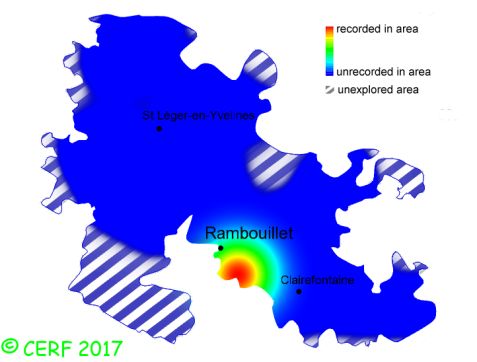|
Boletus badiorufus (R. Heim) Bon
|
New classification: Basidiomycota/Agaricomycotina/Agaricomycetes/Agaricomycetidae/Boletales/Boletaceae
Former classification: Basidiomycota/Homobasidiomycetes/Agaricomycetideae/Boletales/Boletaceae/Xerocomideae
[ section:Pseudoboleti ]
synonyms: Xerocomus badiorufus
edibility : edible, good
|
|
|
The cap is dull brown, firm, fleshy, of hemispherical then convex shape, then flattened.
The cap surface is very downy.
The cap margin is inrolled for a long time.
The stem is full, more or less equal or slightly spindle-shaped, without network. Its colour is pale ochre-buff to pale yellow.
The flesh is pale yellow. It turns slowly reddish pink when cut and exposed to air, and faintly blue; its taste is pleasant; the odour is weak;
The tubes are more or less decurrent, short, pale yellow.
The pores are very small, white, almost unchanging to blue when pressed.
The spore print is pale greenish brown.
It grows in coniferous but also sometimes broad-leaved woods, on a rather acid soil, with blueberries and heather.
The fruiting period takes place from July to November.
| Dimensions: | width of cap approximately 4 cm (between 0 and 8 cm) |
| | height of stem approximately 4 cm (between 0 and 8 cm) |
| | thickness of stem (at largest section) approximately 15 mm (between 0 and 30 mm) |
Distinctive features : dull brown cap with a downy surface; pores almost unchanging to blue when pressed; very short tubes, more or less decurrent
Boletus badiorufus is rare and confined in the forest of Rambouillet, and is infrequent, more generally speaking
.
|  | | Above : distribution map of Boletus badiorufus in the forest of Rambouillet |
|
page updated on 14/01/18
